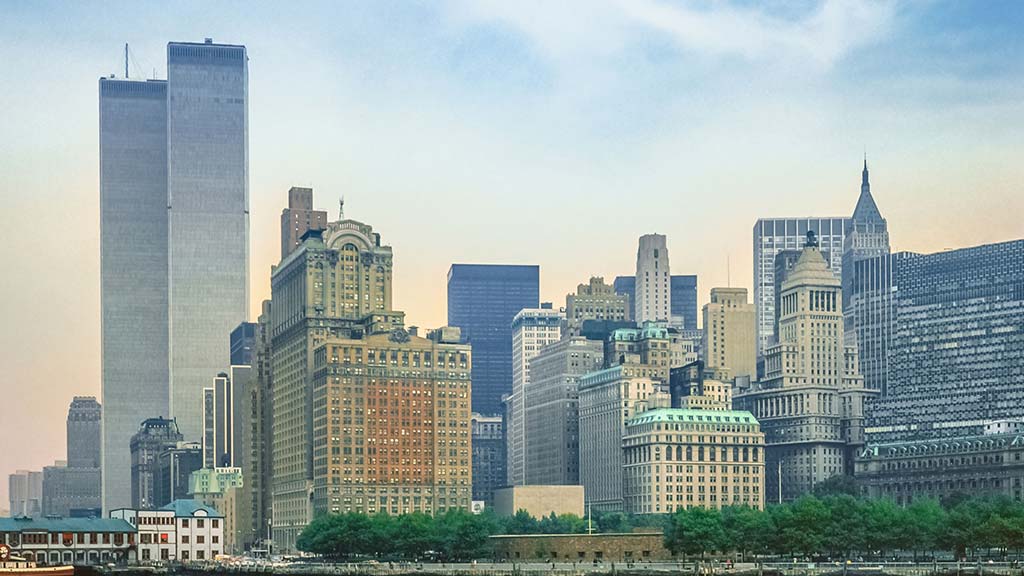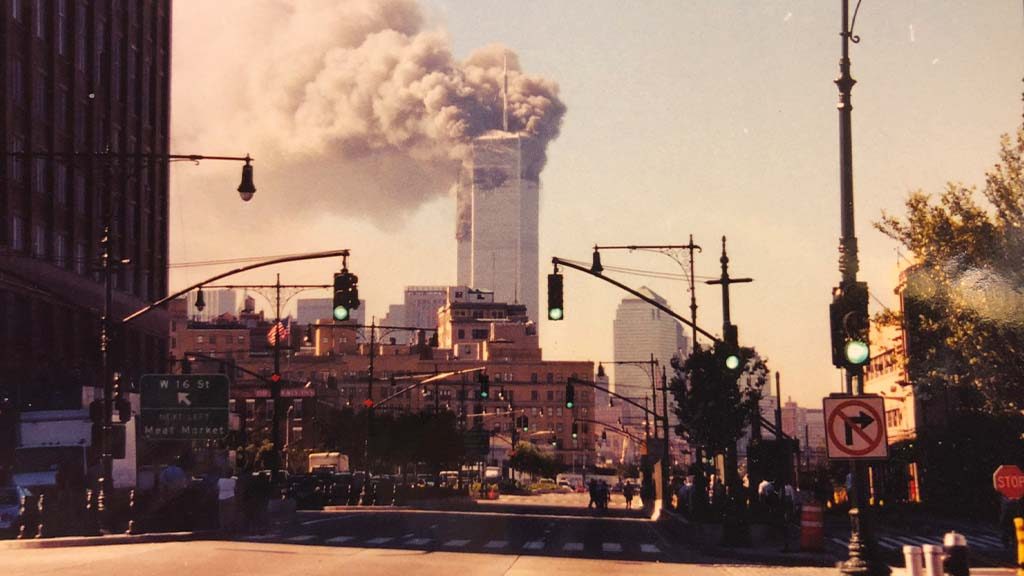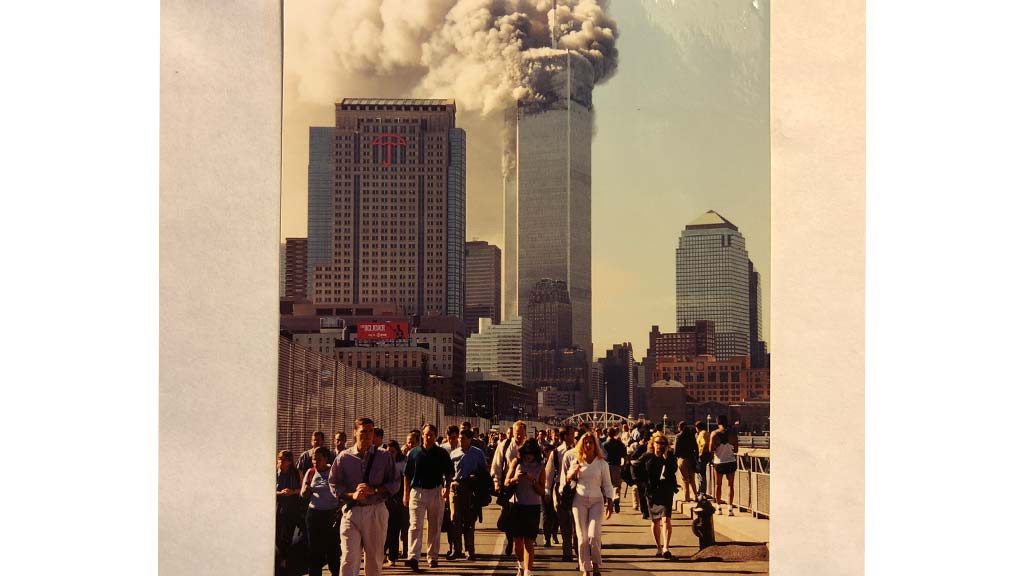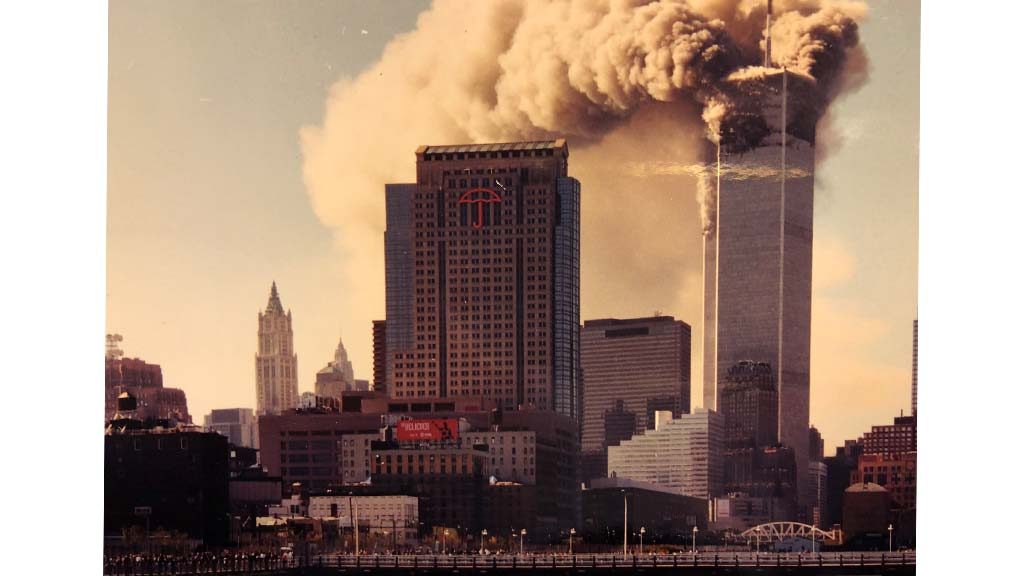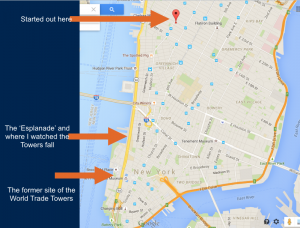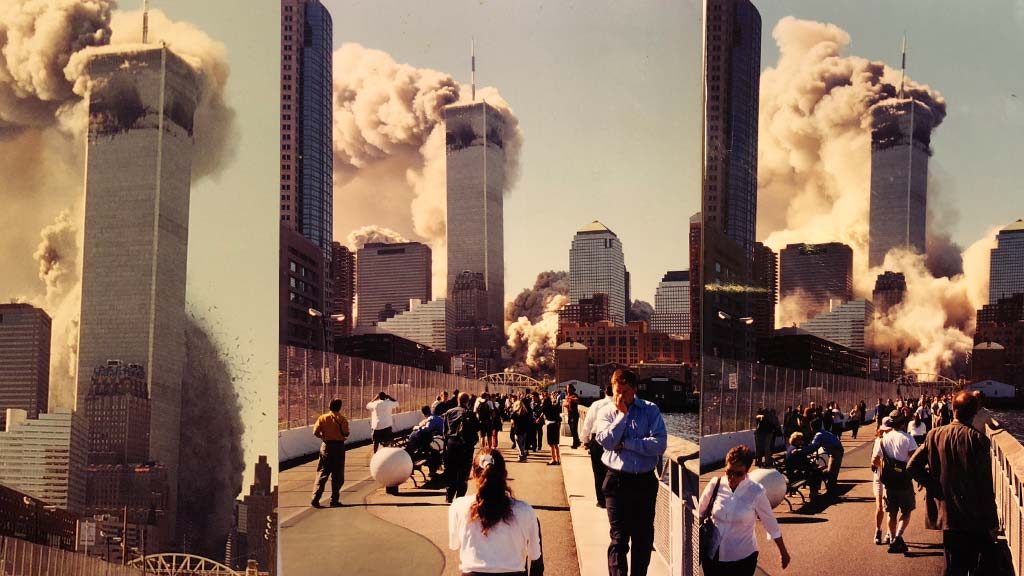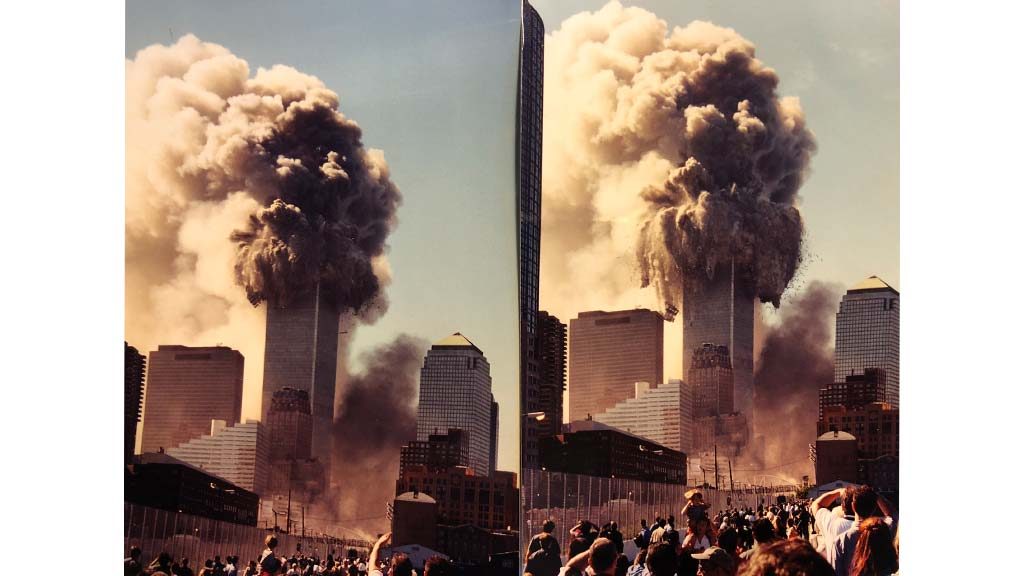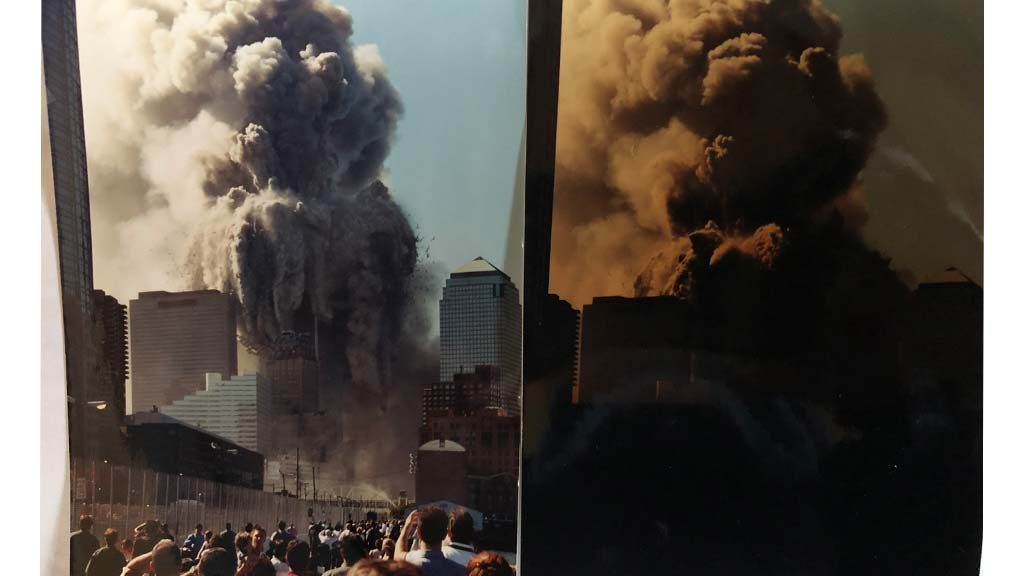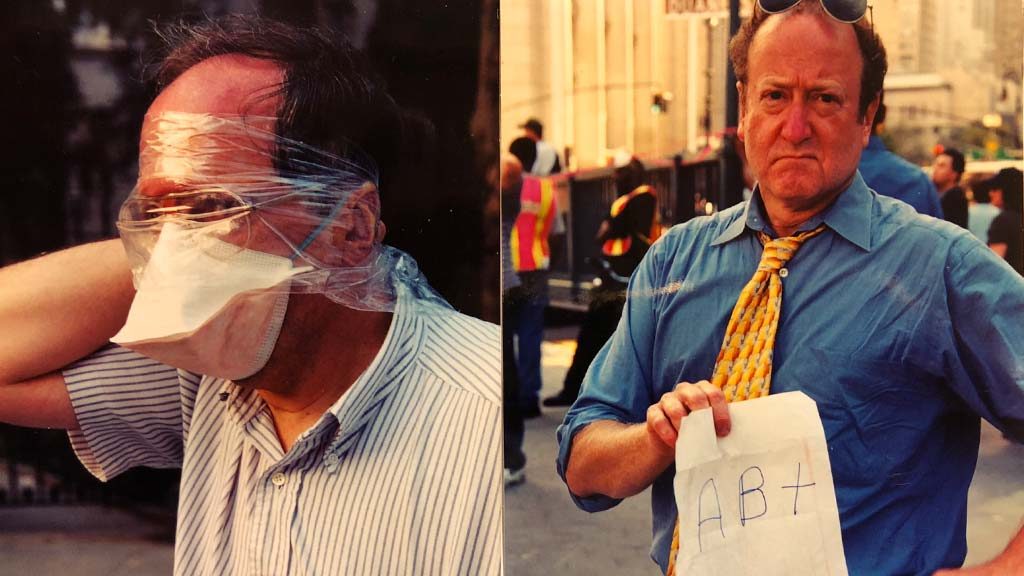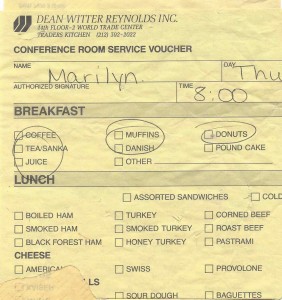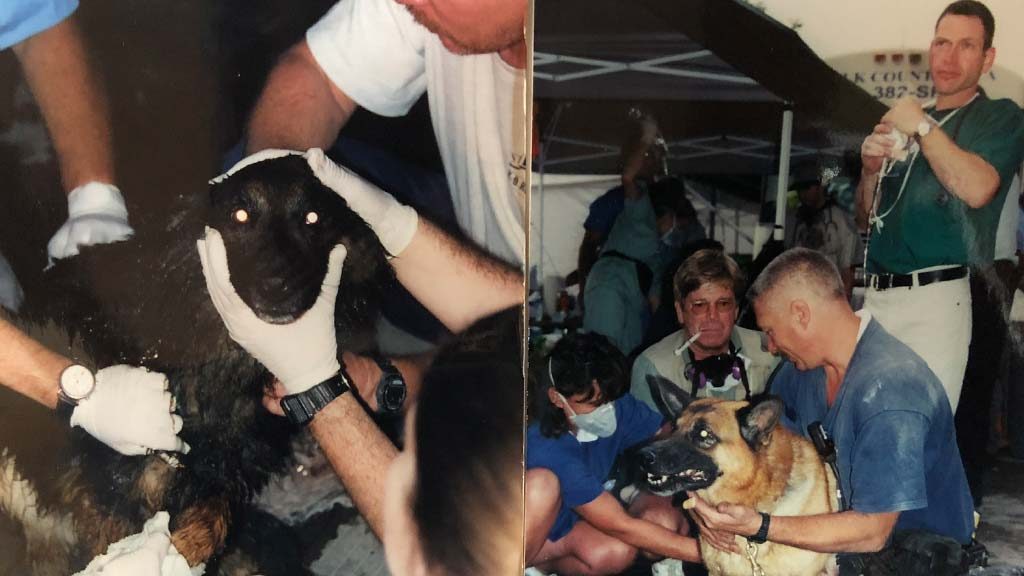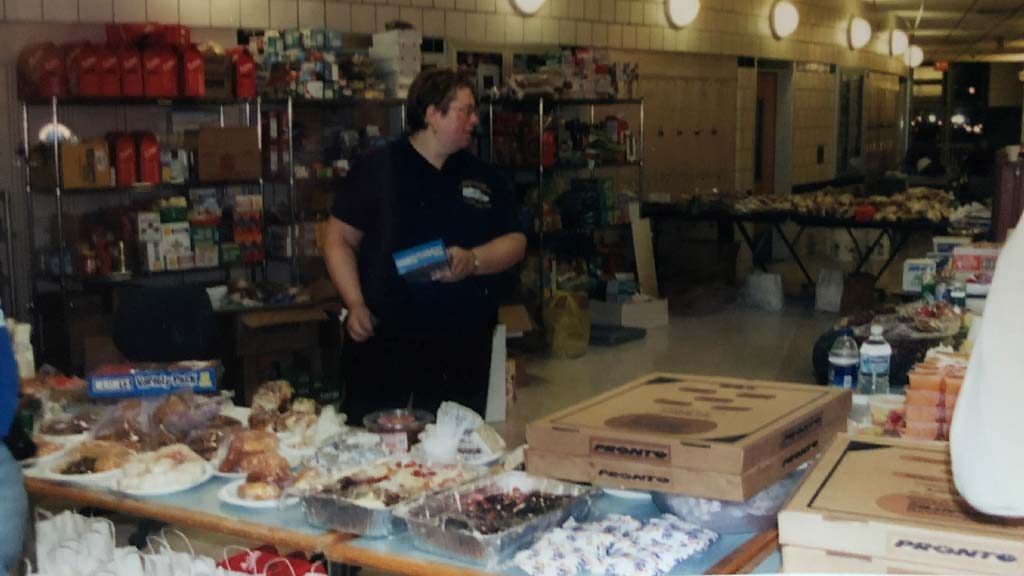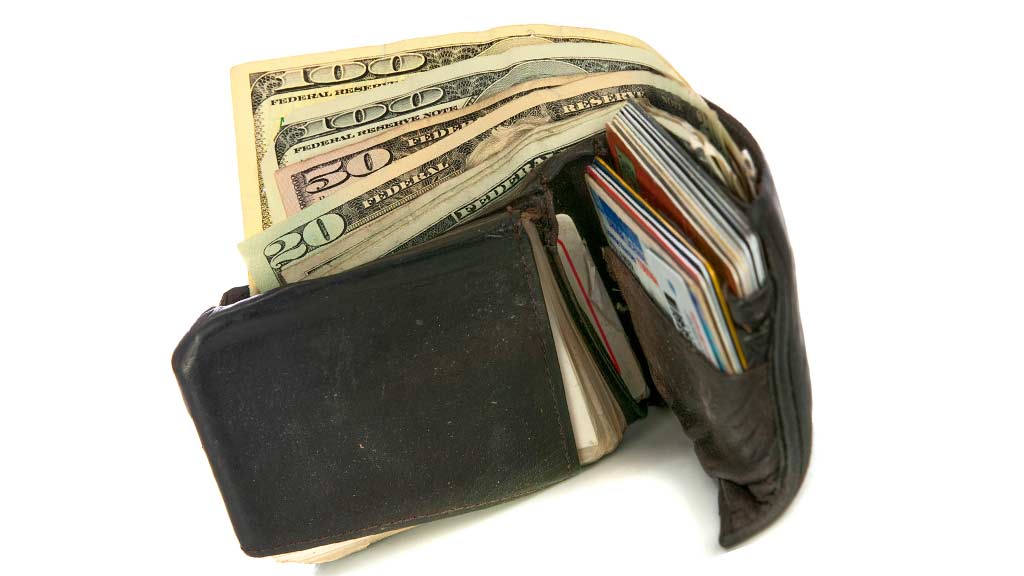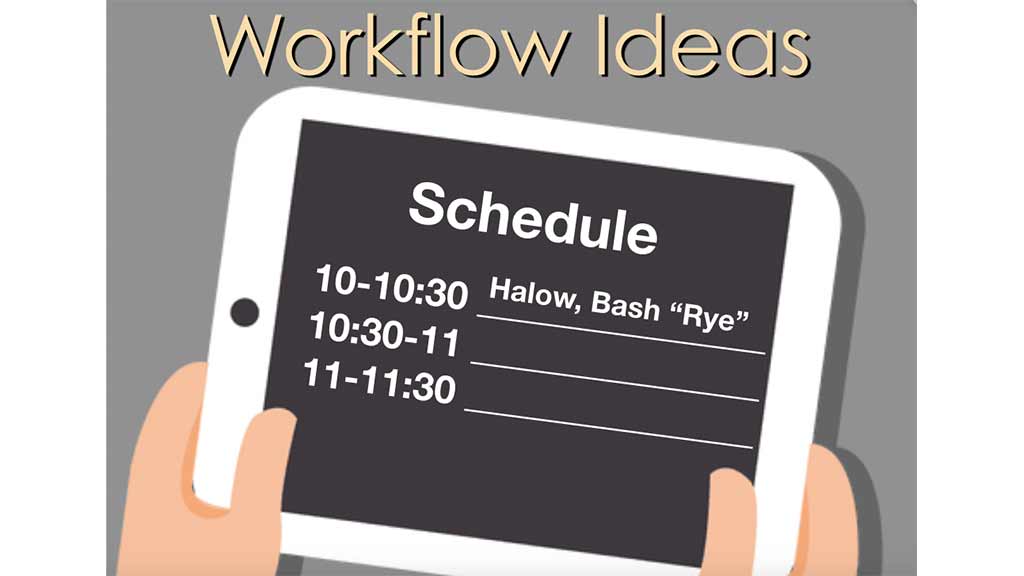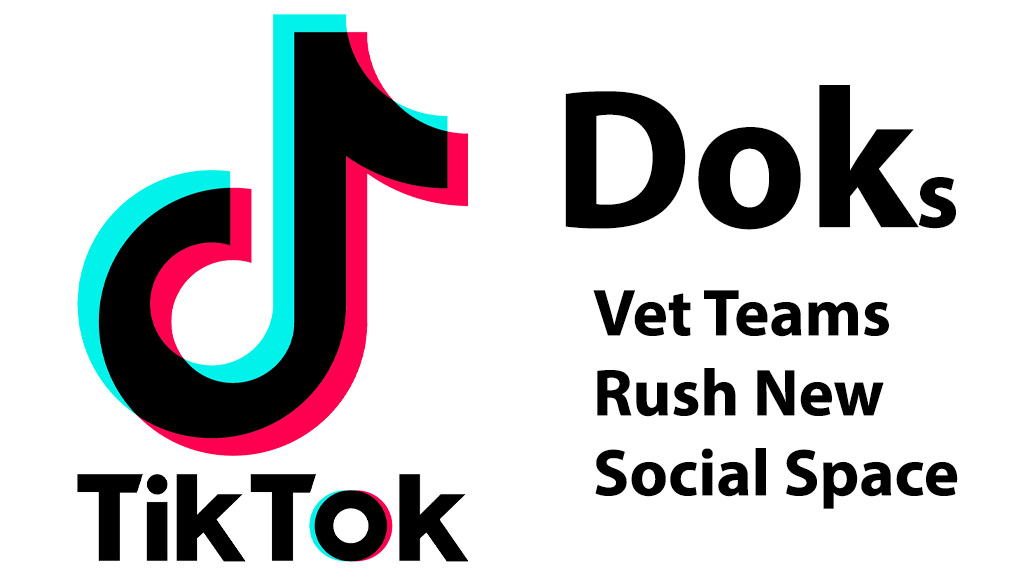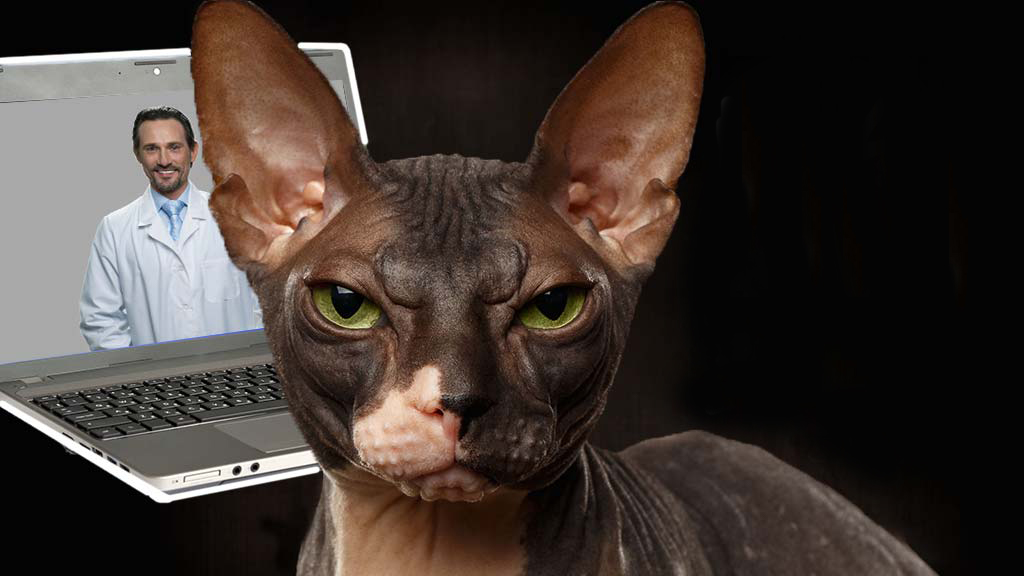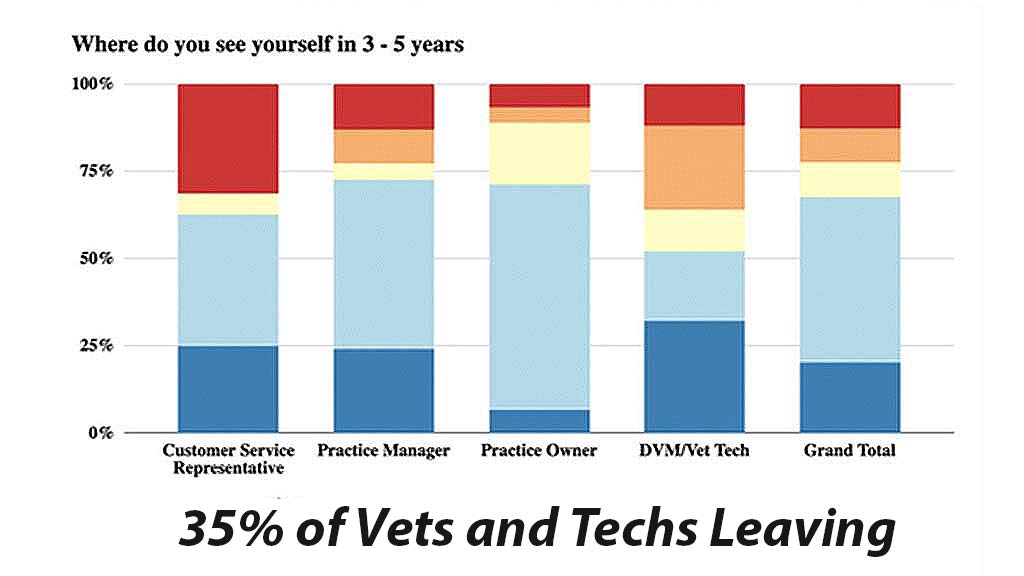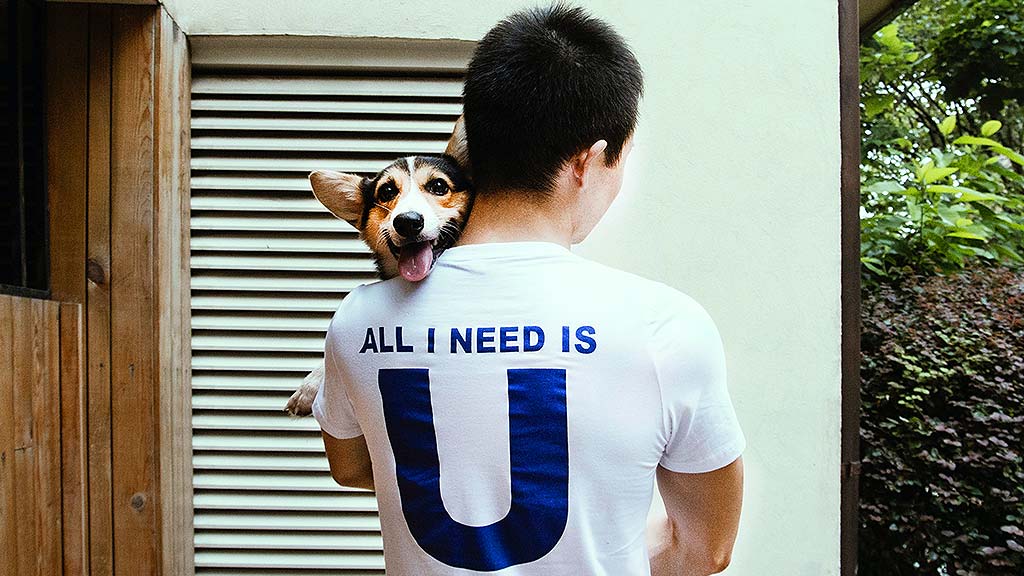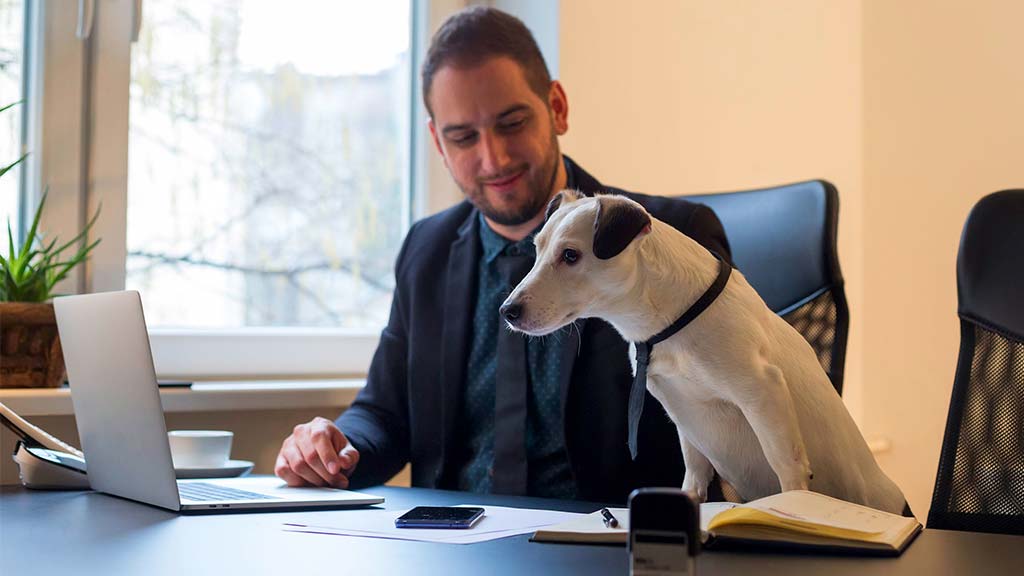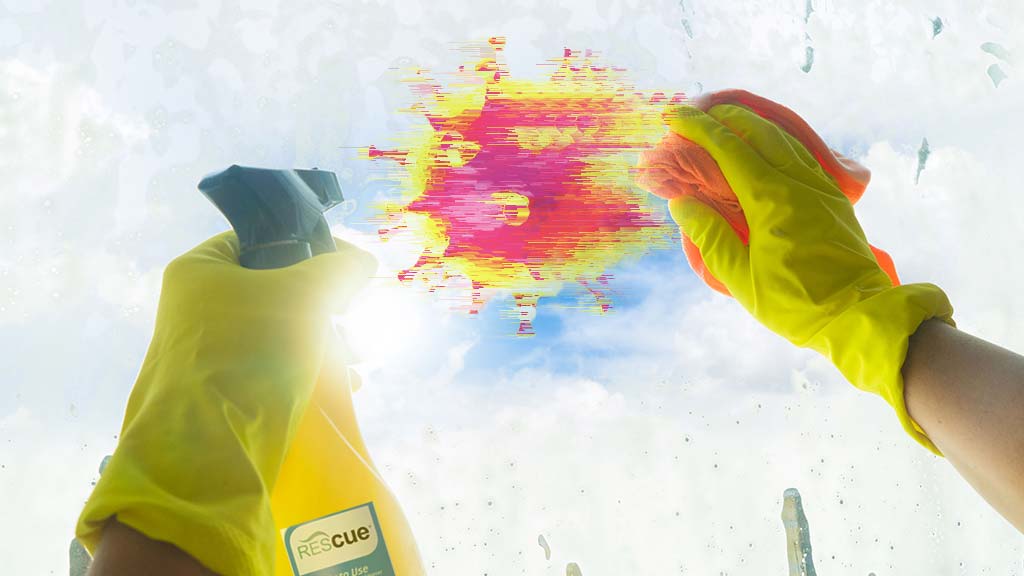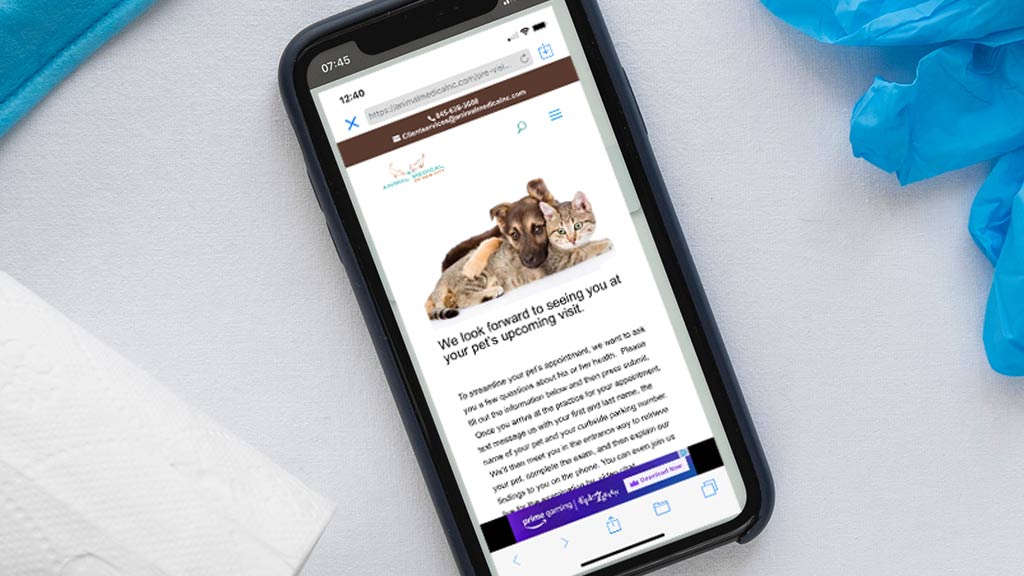I witnessed the Trade Towers fall. On the third day after the attack, I was a volunteer assisting cadaver dogs at Ground Zero. I put together a collection of photos to memorialize the event.
The whole experience still occupies a big part of my memory…as I’m sure it does yours. I am still horrified/baffled/disbelieving that people trapped on the upper floors of the Towers had no other choice but to burn alive or jump. I remember 9-11 as the day when everything changed.
I’m spending a solemn moment now reflecting on that day and hope that all of us leverage whatever we can to sustain our country’s idealism and justice.
A World Changing Event Began With A Clear Blue Sky
On September 11th, 2001, I was still in bed in my NYC apartment when the phone rang. Too lazy to move, I let the answering machine pick up. It was my mother saying something about a plane crash, about how there had not been just one but two crashes. She sounded frantic. Where was I? Was I okay? After a quick call to reassure her, I put on my clothes and rollerblades, grabbed my camera, and headed for the West Side Highway where I knew I would have an unobstructed view.
Two Enormous, Smoking Holes
When I got to the corner of 18th street and the West Side Highway, the sight was arresting. Set against the backdrop of a perfect, blue sky, I could clearly see both towers. There was a hole in each with black smoke pouring out. The holes were so large and black they looked preposterous; they looked as if they had been drawn in the special effects department of some movie studio.
I skated further south where I met the first of thousands that were fleeing the site by walking up the Esplanade. Remarkably, no one looked that upset. They looked more annoyed if anything. I couldn’t believe it! Perhaps they had been through the 1992 attack and were now bored with terrorism, perhaps they were in shock; whatever the case, all looked bewilderingly uninterested.
Are We At War?
By the time that I got to Christopher Street, there were several cars parked along the way with their doors open and their radios blaring. Every car had a group of people around it listening to the newscasters guess their way through what was happening. Rumors were tearing through the crowd that Washington had been hit and that there were more hijackers on aircraft destined for other U.S. cities. The news was whipping many of us into a frenzy, but those evacuating proceeded at their constant, stoic pace. There were many hundreds of people streaming up.
Kansas City, August 27th-30th
Atlantic City, October 11th-14th
San Diego, December 2nd-5th
10% Off Registration With Promo code Faculty10
Oh My God…Those Are People Falling!
By the time I was near Canal Street, I could see flames on the corner of the South Tower where the plane had hit. Huge plumes of black smoke roiled from the holes in both towers, but through this veil, you could see things falling from the top floors. Some of the objects fluttered like they were pieces of siding, but every now and then, smaller, denser objects fell directly down. With horror, everyone began to realize that these denser objects were people! They fell or jumped (you couldn’t tell) without warning, noise, or fanfare and consequently the images of these many (I witnessed six or so) did not seem real. To this day, I haven’t been able to wrap my head around that kind of fate.
The thick stream of evacuees continued to pass. The line stretched as far as one could see down the length of the Esplanade; past Stuyvesant High School (later the makeshift human hospital); and out towards the great lawn of the residential units of Battery Park City.
My Wife Works There
Some women and men walked towards the Towers, into the flow of the evacuees. They were crying. Sometimes they stopped to ask people if they had heard which floors had been hit. Their loved ones worked in the building. It seemed beyond comprehension that these people would find their family or friends in the cataclysm that was in front of us, still they walked on. One woman pushed a baby carriage. Some people tried to stop her, but she would not listen. In several of my photos, a man is seen walking nervously south, but after one tower collapses, he presses his fist into his mouth, turns away, and retraces his steps north again. He said to me, “My wife works there.”
The South Tower Collapses
None of us expected the South Tower to collapse. I remember the sound it made as being muffled and that the sound didn’t square with how catastrophic it looked, but if you look at the picture for the North Tower collapse, you can see the kid on his dad’s shoulders holding his ears, so maybe it was loud. The Tower didn’t fall to one side or another, it fell straight down. As soon as it started to fall the whole crowd moaned. The people walking north turned and gasped. Some began to run, though all of us were clearly out of harm’s way. Many around me began to cry. After so many years of knowing the skyline, the sight of only one tower was extraordinary. The cloud that the fall created spread slowly out, far beyond the base of the towers, and engulfed all of the downtown buildings in a thick cloud of dirty white. Those people that were on the Esplanade near Stuyvesant High School saw the cloud coming and began to run in a panic. Those of us that were farther north realized that a life-threatening stampede was possible. I pressed myself against the fence along the water thinking that I could hold onto the wire if the crowds became overwhelming.
Jets Overhead
A pair of jet fighters roared overhead. Some of us began to fear that we were at war. Another suggested that the Holland Tunnel, which was underneath us, was probably a target as well and that we were in danger. Then…
The North Tower Too
It was equally as unexpected. The hole on the North Tower was much farther up and it did not look like there was sufficient weight above it to bring the tower to the point of collapse. Still, like the one that fell before it, this Tower collapsed straight down. The crowd groaned again and more people started to cry.
The thick flow of people continued north and all of us that had been watching turned and joined them. Once I began walking, I understood a little of the blank-faced feeling; it was a heavy, muted despair. It made looking back too draining, too hopeless. Still, I made myself look because I kept needing proof that what I had watched actually had happened. But the preposterous absence of the Towers only reinforced my feeling that all of this could not be real.
Paper and Plasterboard Dust Everywhere
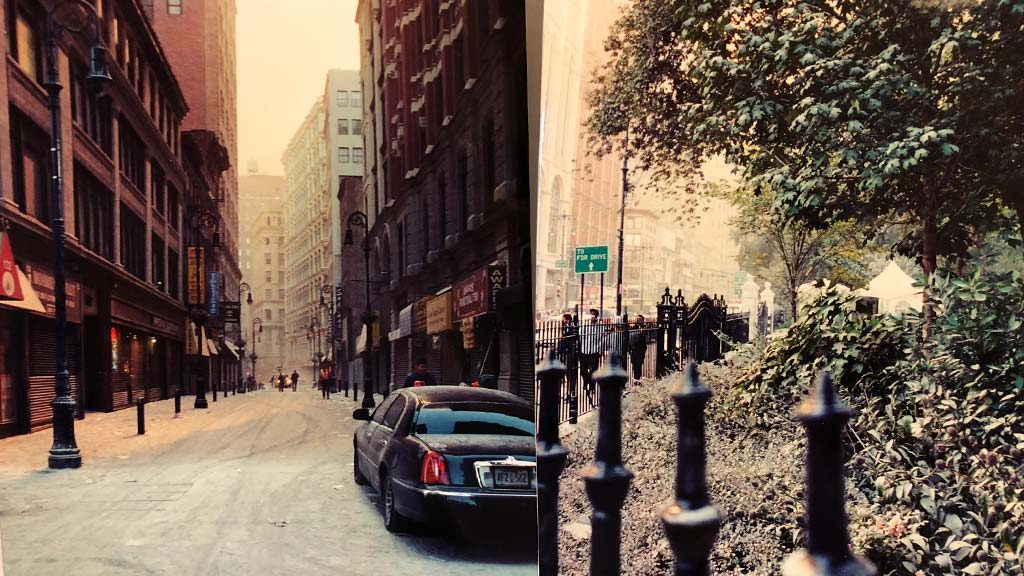
East of the fallen Towers, papers and dust from the buildings’ pulverized sheetrock were everywhere.
I walked all around the city that day. I took pictures of the ash covered firemen and the long, quickly assembled blood lines where each donor had their blood type magic-markered on their arm or printed on sheets of paper. Some areas collected scores of volunteers. Certainly the west side around Christopher Street had hundreds, but farther downtown, on the day of the disaster, people collected around City Hall. The man below holds a sign showing his blood type.
I saw a lot of people who had covered their whole heads with Saran Wrap because they were afraid the explosion contained biological agents. I wandered around the outside of City Hall and watched volunteers hammer together makeshift stretchers out of the lumber stripped from nearby construction sites. I witnessed whole dump truck loads of volunteers wearing dust masks, search and rescuers, drive off and disappear into the heat, smoke and black of the wreckage beyond. I stopped to sift through the sheets and sheets of paper that blanketed everything and filled the gutters. Here was a trading order, 2100 shares purchased for 25 3/4; a Dean Witter conference room voucher requesting hot coffee and danishes; the technical specs to a building’s water sprinkler system. I stopped on the corner of Reade and West Broadway to watch flames consume the bottom floors of World Trade Building Number Seven until a policemen asked me, “Didn’t you hear what I said? I said get out of here. I’m sorry that there aren’t some bodies for you to see.”
An Unprecedented Response
If there was any one thing I learned from my tour of the downtown on September 11th, 2001, it was this: New York City’s response time to the disaster was extraordinary. In only a few short hours, thousands had been organized, mobilized, and were in place. By 2 p.m., Houston Street (a major east/west conduit) was lined with around 100 sanitation trucks ready to remove debris. Twenty-third street was similarly lined with buses to ferry people (trapped by the bridge and tunnel closures) home to their respective boroughs. Police were everywhere. In this city of 8 million, things were safe, secure and controlled. It was a feat of urban planning and good government that should go down in the history books.
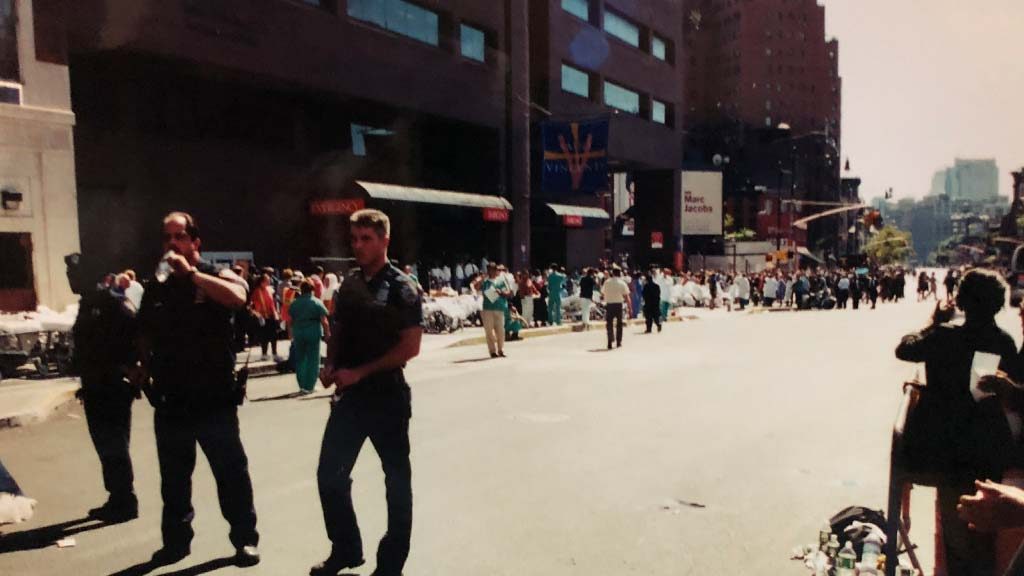
Looking south on 7th avenue, that’s St. Vincent’s on the left. All of 7th Avenue from 14th Street south to the Towers was closed so that ambulances could make their way to the hospital if and when survivors were found. You can see the entire emergency department had assembled outside to triage cases that, unfortunately, never came.
$1000.00
$1000.00 referral fee for veterinarian applicants. Sign on bonuses also available. More.
A Chance To Help The Rescue Dogs
On the third day, my boss got a call from a downtown official requesting that he come to the Ground Zero site and assist in the treatment of the cadaver dogs. While he was on the phone, I prompted him to ask if he could bring a technician and he was told that he could.
We found our rescue unit surprisingly easily considering the dozens of vehicles that were double parked all along the West Side Highway from Ground Zero north to Christopher Street. Here we were briefed on the protocol for treating the animals and met some of the other emergency doctors and technicians. Shortly after we arrived we saw some of the first patients: German Shepherds, their fur matted with wet soot, ash and plaster. We stood back and watched those who were already familiar with the procedure do their work. The amount and level of care was amazing. These doctors and techs were pouring their hearts into their work, not just for the dogs, but for the entire cause. One couldn’t help but to be moved.
An Up Close Look at ‘Ground Zero’ and ‘ The Pile’
After a while, my boss and I agreed that we should try to see more what had happened. It was now twilight and the streets outside of the rescue area were blacked out.
We passed eerily deserted buildings and fancy restaurants whose insides were blanketed in chalky powder. Some of the doors to these places had been jammed open. The fireman had pulled the chairs outside so they could rest and I remember thinking how surreal this disaster site looked with its fine outdoor seating.
Ground Zero
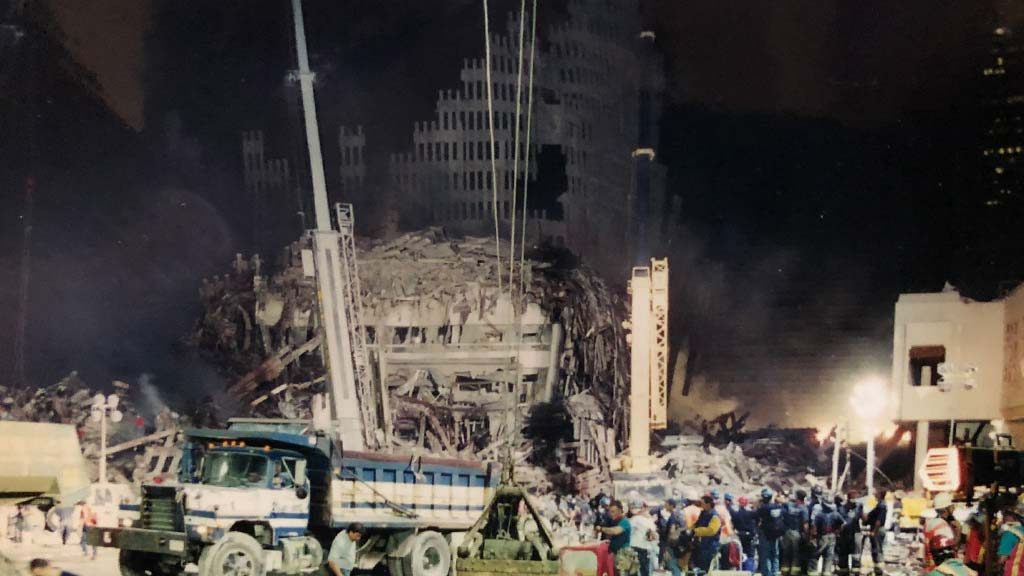
Just a few degrees of the 360 degrees that comprised the disaster site. The honeycomb facade of one of the Towers can be seen in the background.
Finally, we came to Ground Zero. At the site, there were legions of firemen and police officers who gaped and gawked. As we moved forward, the buildings on either side of us were in dangerous conditions: pillars knocked off their foundations, broken windows, mounds of concrete blocks and rebar, reams of paper strewn about, but given the wrecked colossus of what lay beyond, what we were clamoring over was nothing. A police officer gave us permission to advance so that we could have an uninterrupted view of the devastation. It was tough to get through some areas; the ground was like an industrial dump of big concrete blocks, metal and glass. It’s surprising we didn’t get cut or fall or somehow get injured, but as I pointed out, what we were navigating was comparably laughable.
Trade Towers Reduced to a Heap
With a backdrop of foggy smoke, the mounds of debris were acres in size. From my angle, there appeared to be a section of one of the Towers intact. It sat on one of the mounds like a squat cake. Atop it there was a rain of metal strips, like limp noodles. These were metal girders that had melted. Nothing else was quite recognizable except for an office chair here and there and of course the billions of pieces of paper scattered far and wide. There were too, several pieces of the Tower’s honeycomb facade that stuck out of the ground in a somewhat square formation so that the area that the metal encompassed looked like a forward look at the Trade Center some 1500 years into the bleak future. The area smelled like burnt garbage, but there was no evidence of the carnage some were reporting. However none of these aspects of the site were as shocking as the size of the disaster itself. Since the attack, I have seen many photos of Ground Zero, including my own, but none come close to capturing the magnitude of the destruction. It’s because it not only stretched up and out, but all the way around as well. It filled up one’s entire field of vision, 360 degrees of disaster. Theaters need screens on all four walls if any film is going to do justice to the vastness of the wreckage.
New York Showers the Relief Site with Supplies
As I said earlier, everyone was extremely eager to assist, but because it was the people of NYC offering help, the assistance was five star and often seemed surreal. If you felt like having MacDonald’s, there was an emergency unit set up by the company itself complete with Ronald MacDonald logo and just-out-of-the-fryer French fries. A tea selection at the Salvation Army canteen included Lemon Zinger, Sleepy Time Chamomile, and Cinnamon Mist. When you walked the street, young volunteers brought refreshment selections around on trays… like we were at a cocktail party! Offerings included Gatorade, Poland Spring water, soda, Starbuck’s coffee, Krispy Kreme donuts and candy bars. The excess felt out of place, almost disrespectful, but due only to the generosity of the stores and people of Manhattan.
Stuyvesant high school was outfitted to care for victims and any rescue workers that sustained injuries. There were arrow signs everywhere which read burn unit and eyes and orthopedic and sleeping areas and food. Upstairs I was shocked to see masseurs and masseuses. Someone was even getting acupuncture! There was a place for the rescue workers to get a change of clothes that included still-in-the-wrapper stacks of shirts, socks, underwear, pants, and shoes. On top of this, there were entire classrooms filled with more supplies that had yet to be unpacked. The canteen was tremendous. It included long buffet tables with outlandish selections like prosciutto, fresh mozzarella and pesto sandwiches on whole wheat baguettes; or fresh meatloaf sandwiches with dill mayonnaise. There was fresh fruit salad, a peach melba for dessert, and a long line of hot foods that included wonderful pasta combinations, grilled chicken, and juicy, hot hamburgers. I’m not sure why, but there were also shelves and shelves of pricey gourmet groceries, as if you might be inclined to pick up something from the store on the way home from your shift at the disaster.
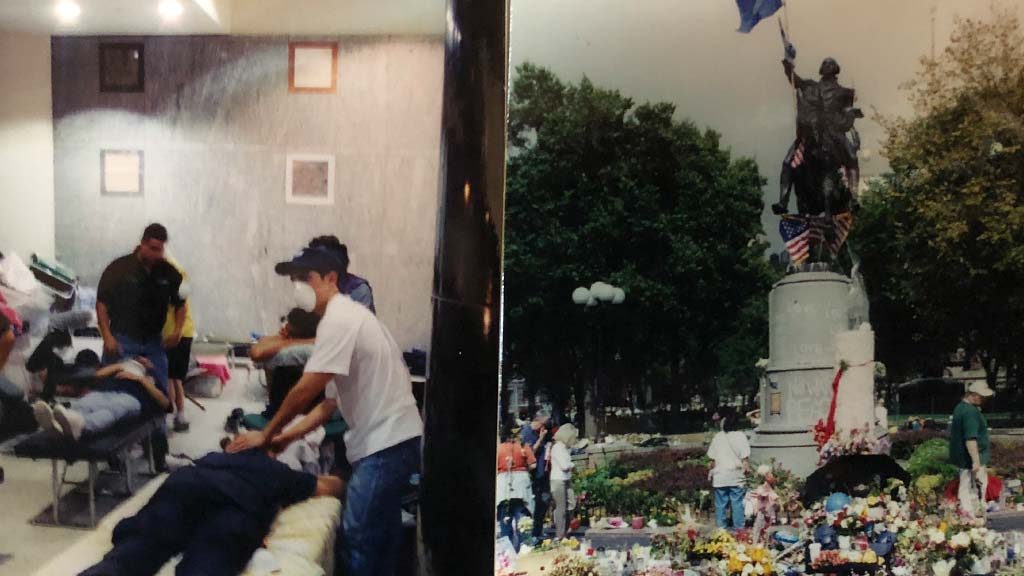
Left, a volunteer provides a massage to one of the rescue workers. Right, one of the many makeshift memorials that cropped up after the attack. This one in Union Square Park.
Loss of Innocence
Since 9-11, we’ve had a couple of wars, a rise in gun violence, a return to nationalism… 9-11’s memories continue to haunt, but the era, the age of innocence in which the disaster occurred, seems a lifetime ago. In the midst of the Pandemic, Afghanistan, two contentious elections and a polarized nation, we no longer mourn collectively, we rage in isolation.
It’s too bad that each time we rebuild, we don’t look more to the past for inspiration, to not just what was wrong, but what was so very much right. What did we ultimately lose that day? The lives, the Towers, the prints to the water system, the breakfast order for some danish? What folded into history that day and what new pages are we leaning into now? To what extent are we pushing forward without turning thoughtfully back? A promise to never forget should include more than the battles, but a call to remember the deep consolation of being together.

